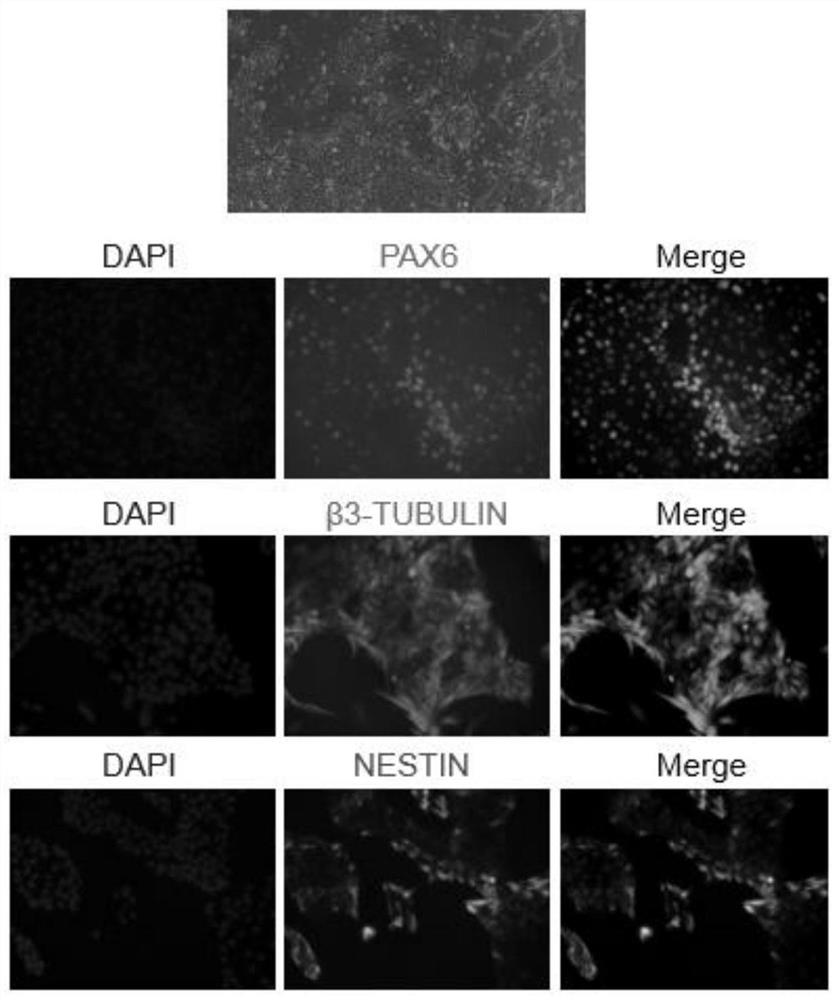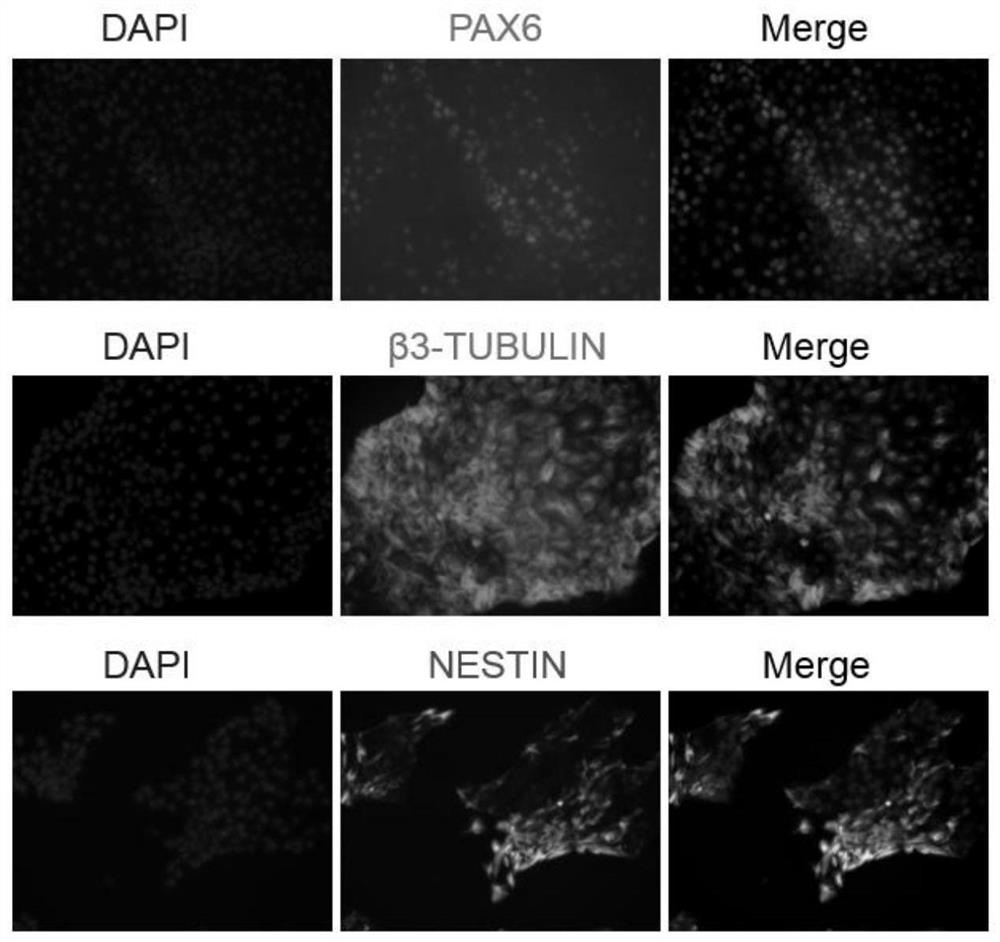A method for differentiating human pluripotent stem cells to ectoderm
A technology for human pluripotent stem cells and ectoderm, which is applied in the field of ectoderm differentiation of human pluripotent stem cells, can solve the problems of uncertain differentiation effect, high culture cost, complicated process, etc., and achieves short experimental period, simple components and reliable results. Effect
- Summary
- Abstract
- Description
- Claims
- Application Information
AI Technical Summary
Problems solved by technology
Method used
Image
Examples
Embodiment 1
[0044]Method for differentiating human pluripotent stem cells to ectoderm:
[0045] Day-1: Human iPS cells were digested into single cells with TrypLE select, resuspended in E8 complete medium containing 5 μM Y27632 and counted according to 2×10 4 piece / cm 2 Inoculate onto laminin 521-coated culture plates at 37°C in 5% CO 2 Culture overnight;
[0046] Day 0: After 24 hours, replace with the medium of the first stage of ectoderm differentiation; the medium of the first stage of ectoderm differentiation is based on DMEM / F12 medium, containing 1 mg / ml bovine serum albumin and 2 μM AM580;
[0047] Day 2: After 48 hours of induction culture, replace with the medium of the second stage of ectoderm differentiation; the medium of the second stage of ectoderm differentiation is based on DMEM / F12 medium, including 1mg / ml bovine serum albumin;
[0048] Day 3: After re-induction culture for 24 hours, immunofluorescent staining was performed on the cells using the antibodies of ectoder...
Embodiment 2
[0051] Method for differentiating human pluripotent stem cells to ectoderm:
[0052] Day-1: Human iPS cells were digested into single cells with TrypLE select, resuspended in mTeSR1 complete medium containing 5 μM Y27632, and counted according to 2×10 4 piece / cm 2 Inoculate onto laminin 521-coated culture plates at 37°C in 5% CO 2 Culture overnight;
[0053] Day 0: After 24 hours, replace with the medium of the first stage of ectoderm differentiation; the medium of the first stage of ectoderm differentiation is based on DMEM / F12 medium, containing 1 mg / ml human serum albumin and 2 μM AM580;
[0054] Day 2: After 48 hours of induction culture, replace with the medium of the second stage of ectoderm differentiation; the medium of the second stage of ectoderm differentiation is based on DMEM / F12 medium, including 1mg / ml human serum albumin;
[0055] Day 3: After re-induction culture for 24 hours, immunofluorescent staining was performed on the cells using the antibodies of ect...
Embodiment 3
[0057] Method for differentiating human pluripotent stem cells to ectoderm:
[0058] Day-1: Human iPS cells were digested into single cells with TrypLE select, resuspended in E8 complete medium containing 5 μM Y27632 and counted according to 2×10 4 piece / cm 2 Inoculate onto laminin 521-coated culture plates at 37°C in 5% CO 2 Culture overnight;
[0059] Day 0: After 24 hours, replace with the medium of the first stage of ectoderm differentiation; the medium of the first stage of ectoderm differentiation is based on DMEM / F12 medium, containing 1 mg / ml bovine serum albumin and 2 μM AM580;
[0060] Day 2: After induction and culture for 48 hours, immunofluorescent staining was performed on the cells using antibodies to ectoderm-specific markers PAX6 and NESTIN, and the results are shown in Figure 4 , Figure 4 Shown in ectoderm-directed differentiation of cells, ectoderm markers PAX6 and NESTIN staining positive (10X).
PUM
 Login to View More
Login to View More Abstract
Description
Claims
Application Information
 Login to View More
Login to View More - R&D Engineer
- R&D Manager
- IP Professional
- Industry Leading Data Capabilities
- Powerful AI technology
- Patent DNA Extraction
Browse by: Latest US Patents, China's latest patents, Technical Efficacy Thesaurus, Application Domain, Technology Topic, Popular Technical Reports.
© 2024 PatSnap. All rights reserved.Legal|Privacy policy|Modern Slavery Act Transparency Statement|Sitemap|About US| Contact US: help@patsnap.com










